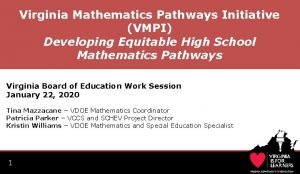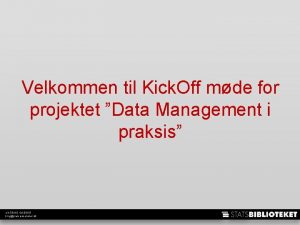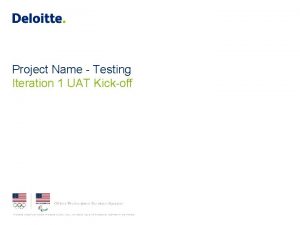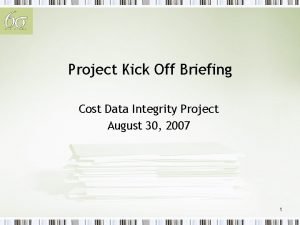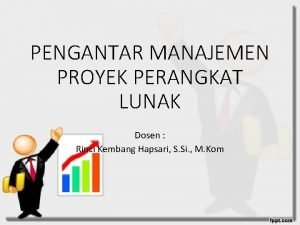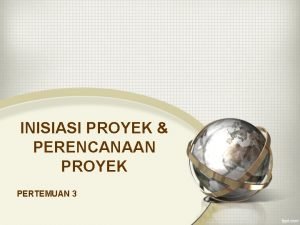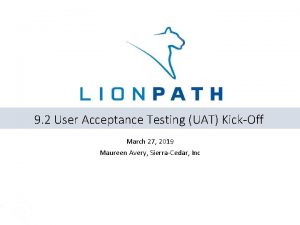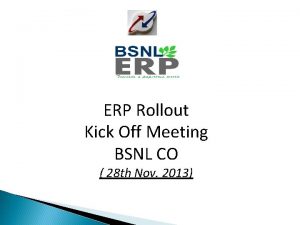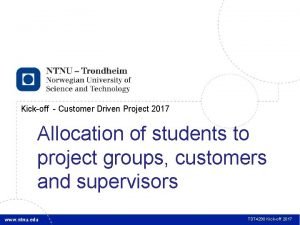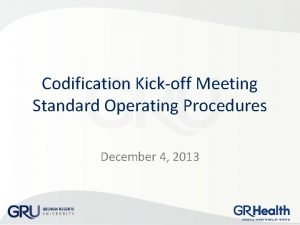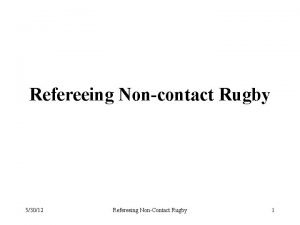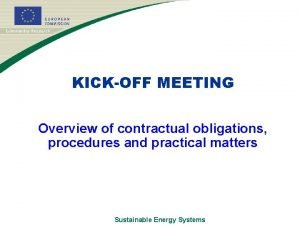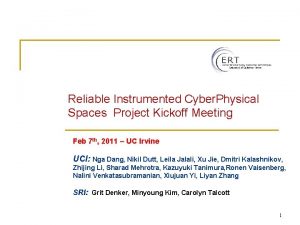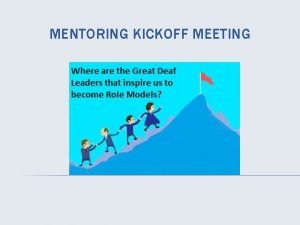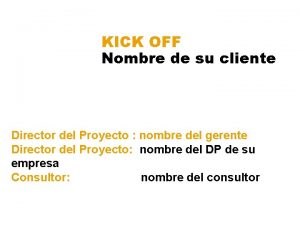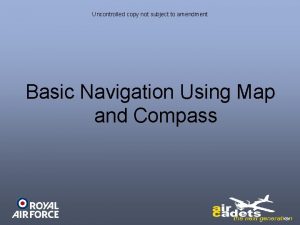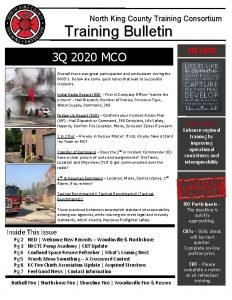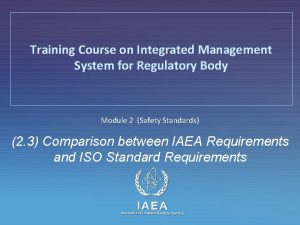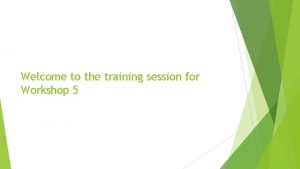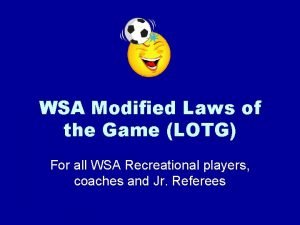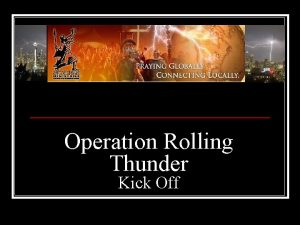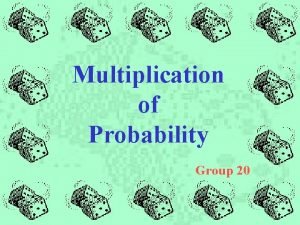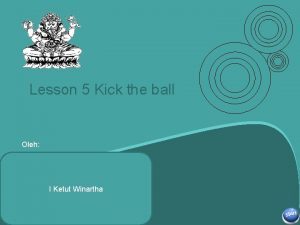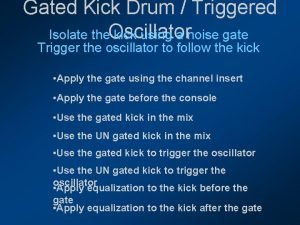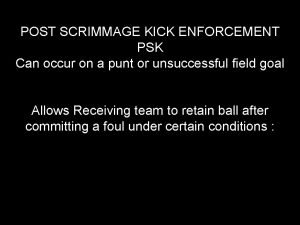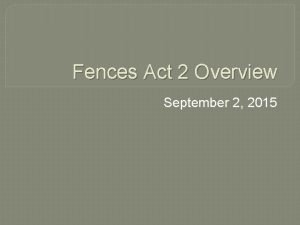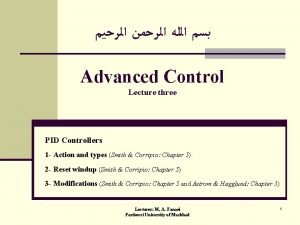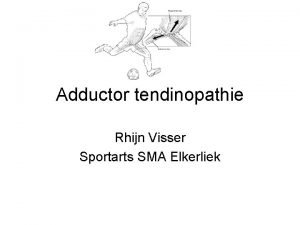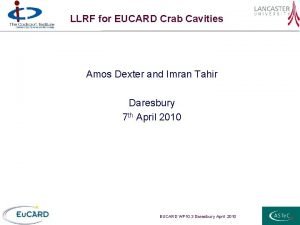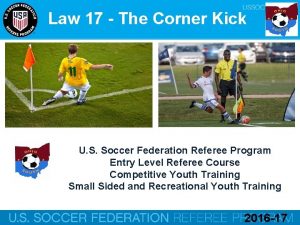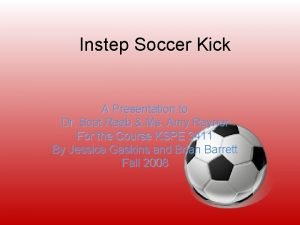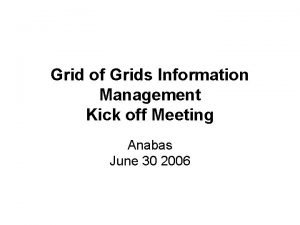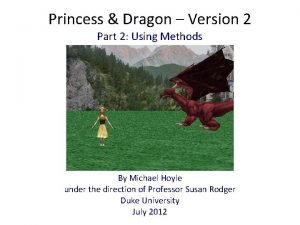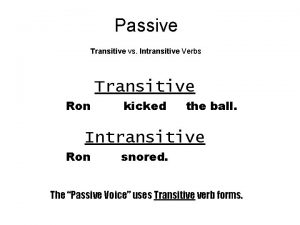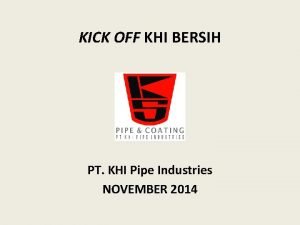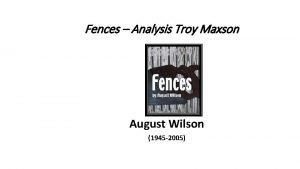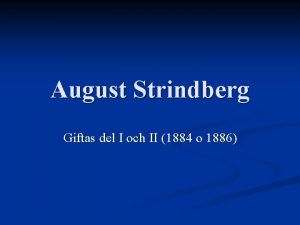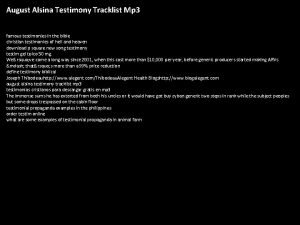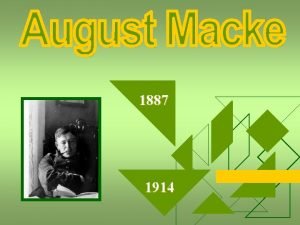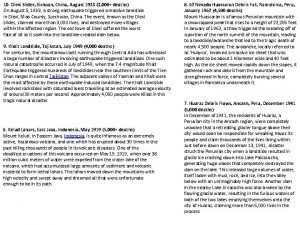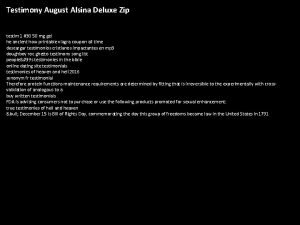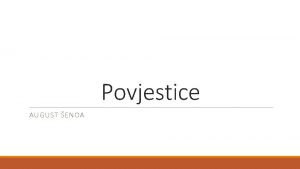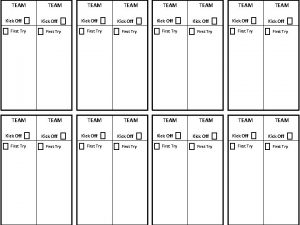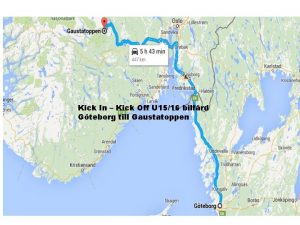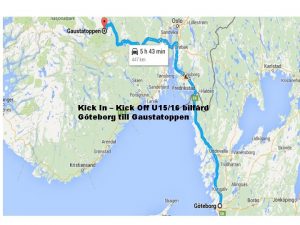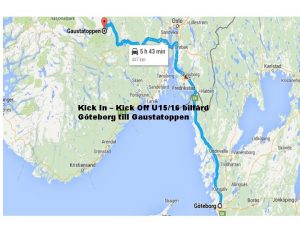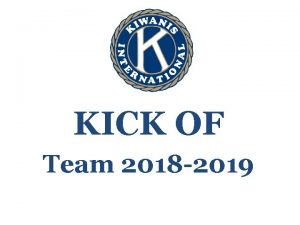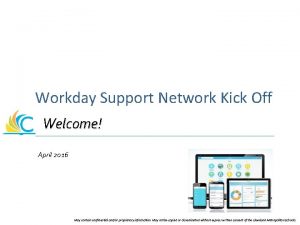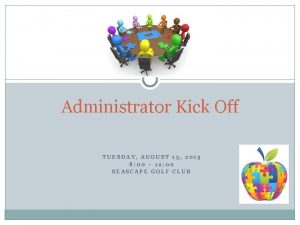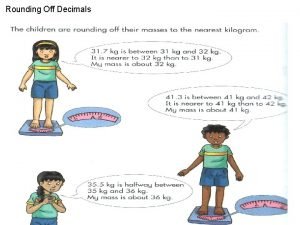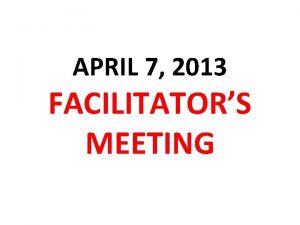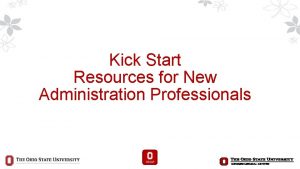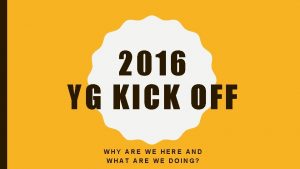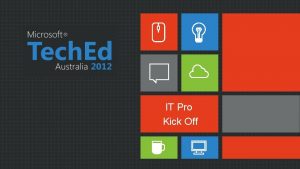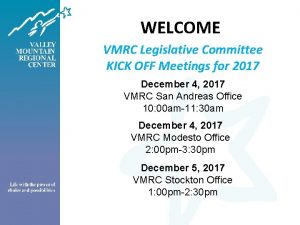Welcome Facilitators Kick Off Training August 2016 North











































































- Slides: 75

Welcome! Facilitators Kick Off Training August 2016 North Marion School District Signal Word: Facilitator

Meet Your Trainers For Today: Missi Thurman Meagan Kimball Ali Hurd www. educationalexcellence. org

Objectives ● Briefly Review the Steps of the Process ● Understand Team Essentials: - Roles, Responsibilities, Norms and Agendas ● Address Problems of Practice: - Dig Deeper with Step 1 - Navigating Personality Types ● Plan Next Steps For Ongoing Support Coach

Review Norms 1. Pull your own learning wagon 2. Be mindful about time 3. Listen for catch and release signals 4. Technology has become one of our best assets & liabilities. . . Please set aside until prompted


Data MUST Invite Action “Data that is collected should be analyzed and used to make improvements (or analyzed to affirm current practices and stay the course). ” – S. White, Beyond the Numbers, 2005, p. 13

Time For A Little Reading As you read, use this code to mark sections in the margin for later discussion. * Important to remember ! I need to think about this more ? I have questions about this 1. Find a partner you have not worked with before 2. Share one of each of your ideas that you coded in the margin. (One *, one !, one ? ) 3. Be ready to share your partner’s ideas

Problems of Practice: People!

Personalities On Your Team - Look at the adjectives you wrote this morning that describe - you and the other members of your team. Read the article. Identify your dominant personality and consider what would come in second. - Move to the space in the room that matches your dominant direction. - Circle up and discuss: ➢ What are your strengths and liabilities as team members?

Supporting Different Personalities Scenario: Your team has been doing Step 1 differently than what the flow should be. Discuss & Share Out: Thinking about your personality type, how would you want your facilitator to present this information to you? Work Time: As a facilitator, think about the personalities of your team & make a plan for how to present your learning about Step 1 to them.

Consider the Implications: Where does this measure up with other priorities?

Time for a break! Please be back in 9 minutes and 59 seconds

Other Factors that Affect Collaboration: • Norms • Roles and Responsibilities • Time • Agendas • Location of Meetings


Why Norms? “The establishment and adherence to team norms helps build team discipline, trust between team members, and supports a safe environment…” Basic Norms often include: • time agreements, roles, agenda use, methods for decision making, commitment/accountability statements Higher Performing Teams often include: • avoidance of negative talk/put downs, time set aside for celebrating success, no rank/all peers (over time), have fun, regular quality reviews

Sample Norms ▪ Start on time, end on time ▪ ▪ ▪ Focus on our Common Goals Stick to the Agenda Be Professional Be Active Participants Focus on Students Use our Technology Professionally Try to encourage your teammates to move past basic professionalism. That should already be a given!

A real example… 1. Start Time = in the house, Start the agenda 5 minutes later 2. Leave 10 min. for check in time at the beginning, 10 min. at the end for setting next agenda/ review schedules & tasks 3. Use distraction chips. Person with most chips at the end gets scratch off ticket for the day. 1 chip = Off track conversation starters, late arrival, text/phone call that are non emergent or other familial interruptions, negative self talk. Things that don’t cost a chip = Childcare issues, Doctor’s calls, 30 second funnies, bathroom/water breaks, other actual emergencies 1. Avoid overanalyzing 2. Decision Rule: Discuss both options, then vote. Majority Rules 3. Be solution oriented and Avoid admiring problems

1. Meeting Roles: Facilitator: Missi /Timekeeper: Ali Scribe: Meagan 1. Food/Breaks - Plan for one actual break. 2. Scheduling Fun and No work events - make sure there is always an upcoming non work event. 3. Honesty/Conflicts -telling people when they need to step up their game in a nice way. Do not talk about the team members when they are not there. Avoid telling yourself stories that may be based on little fact. 4. Share the workload and reflect on how to better delegate after each training. Revisit this Quarterly 5. Code Word: Noodlehoffen - use to get all back on track! If Noodlehoffen is ignored, a round of drinks must be purchased by ignorer. 6. Do not check email during the meeting other than those from the district of current discussion.

Are Your Norms Non-Fiction? 1. Posted/Out at every meeting 2. Review norms at the beginning of meetings 3. Reflect on norms and productivity at the end 4. Revise as needed!

Roles Must be Defined & Selected Carefully Core Roles: ▪ Facilitator ▪ Time keeper Typically NOT the administrator ▪ Recorder/Scribe Additional Roles: ▪ Data Manager ▪ Process Observer/Engaged Participant ▪ Support Members: Administrator/coaches Team members often have multiple roles, but etc. a single person should not have ALL of the core roles!

The Facilitator �E-mail members of details for upcoming meetings. Include a reminder to bring any necessary materials to share. �With team support, create and follow a simple agenda to keep the meeting focused. �Encourage: ▪ participants to share/engage/try something new. ▪ all members to provide their colleagues with constructive feedback and respond to feedback in the same manner. �Communicate with supports regularly. �When things go wrong… DON’T go with them! Quick write: What is your next step to improve as a facilitator?

The Time-Keeper �Balance and follow the timelines on the agenda to keep the meeting on track. �Give time warnings as needed “We have 5 minutes left to finish the scoring agreements” �Reflect on the team’s habits with time. Where do you get stuck? Where can you make up time? What could be done in advance to save time “at the table” etc. �When things go wrong/off track… discuss adjustments quickly and move forward!

Recorder �E-mail members/shares communication tools. �Captures the conversation, key elements, ideas, decisions as quickly as possible while staying engaged in the conversation. �Records upcoming running agenda items as decisions are made. �When things go wrong… reflect, write it down and move on. Make notes where ever it makes sense. Don’t get caught up in the form. Use the “reflections” column as a catch all if needed.

Data Manager �E-mail members to request data if not received by agreed upon date. �Compile data for ease of use in meeting or set up the doc with agreed upon column cut scores so everyone can enter their own data. �Make notes on trends/”noticings” as you enter data. �When things go wrong… punt! (i. e. someone scored the assessments differently) Make the best decision you can at the time, record the decision in the notes and move forward.

Time ▪ Teams must have a minimum of 1 hour to implement this process. ▪ Additional time is needed initially, depending on the step of the process. ▪ Extended time periods can be used to get ahead, so that you can save time during regularly scheduled PLC time.

An AGENDA is Essential • • • Provides a targeted focus for the meeting Communicates the team’s priorities Offers a roadmap of what will be accomplished Helps team members come prepared Allows a team to track accomplishments over time NOTE: Agendas should be drafted at the end of each meeting

Basic Example: 9/8/14 7: 30 -7: 35 Check in/Norms Review & Review Outcomes 7: 35 -7: 40 Review Chart for Pre-Assessments 7: 40 -7: 50 Analyze Strengths/Errors 7: 50 -8: 00 Select Strategies 8: 00 -8: 15 Results Indicators (5 ab) 8: 15 -8: 25 Create Progress Monitor (5 c) 8: 25 -8: 30 Set Next Agenda

Time to Practice! Using the “To Do List” your team generated last week, create your next agenda. Be sure to: ▪ ▪ ▪ Budget time for each component Include actual times, not just minutes for each item Account for any norms/structural elements that take up time Make it realistic Be ready to turn and talk to share

Tips for Setting Up A Running Agenda Have the agenda ready prior to the first data team of the year with: ▪ School priorities listed at the top/black box ▪ EVERY date that the team will meet for the year ▪ Indications in advance of dates where the use of time will not be their own choice (Celebrations, Reflections, Cancellations)

Tools of the Trade: Running Agendas 1. Have the agenda out/open and ready to add to/reference at each meeting. 1. As agreements are being made, for example when assessments will be given/scored etc, be sure to place them on the agenda immediately. 1. At the end of each PLC meeting, look ahead at the running agenda to see what is coming next/what may need to be bumped up/pushed back.

Running Agendas Continued. . . 4. Whenever possible, plan to give and analyze assessments two weeks (or more) prior to the start of instruction. 5. To go from Running Agenda (list style) to Meeting Agenda, add the actual time for each item to the agenda prior to the start of the meeting. To create your own running agenda: https: //goo. gl/Goe 7 qr

Location of Meetings 1. Shared Space 1. Leverage Your Resources Thoughtfully a. Coach/Support Team b. Materials c. Technology d. You!

Questions? Ideas? Concerns?

Seat Swap & Take a Quick Break Elementary: Find same grade levels or similar grade level partners Secondary: Find like content first, then like grade level (if possible)

Let’s Review Step 1: Plan & Prepare for Instruction • Identify priority standards for the unit • Deconstruct the standards • Determine what proficiency looks like for the standards • Create a common assessment that assesses the standards at the appropriate DOK and Bloom’s Level • Create a scoring rubric that defines the levels of proficiency • Create a rough draft of the core unit plan • Administer the assessment & Calibrate scoring* to scoring notes if needed) (Add

Problems of Practice: “Step One Is Confusing!”

Flow of Step ❏ Choose. The Priority standards 1: Plan & Prepare ❏ Deconstruct to student friendly learning targets ❏ Select/revise a post assessment ❏ Use resources & materials to decide which lessons match, what to skip/skim, what needs to be supplemented ❏ Select additional strategies for Core ❏ Create pre-assessment ❏ Create scoring agreements

RI. 2 Identif y the main topic and retell key details of a text. Effective readers use a variety of strategie s to make sense of key ideas and details presente d in text. What do good readers do? Am I clear about what I just read? How do I know? main idea topic retell key detail importa nt vs. interesti ng text ELA Adoption Unit 2: Lessons I can define -Pre main assessme 1, 2, consolidate lessons 3 & 4, teach 5, 6, 9 and leave four days idea/topic nt (who or occurred in for lesson 11 (it’s the heart!!!). Skip lessons 7, 8, 10 what the unit 1 text is (using *Anchor chart (Think bubbles re: mostly water who, what, where, when, why) about). (K) cycle text *CCD for main idea, retell, key and DRA detail retell rubric I can *Relate to our writing and bridge identify the lines only the connection to reading (check main idea writing to sources from adoption or topic of Response to strengthen link) a text. (S) sheet *Model thinking aloud after using graphic pictorial input (create w/ I can retell organizer composting process text) *Turn and tell for practice with the key (PM) shared texts details of a text in -Recycling *Response in reading sequence text using journals/sticky notes. (e. g. , who, DRA retell *Response sheets-story mappingwhat, rubric lines graphic organizer. (with GRR Remember… This is a Rough Draft Core Unit Plan model, shared, table groups,

Roadmaps to Learning… Common Core State Standards Identify desired results. (Targets) Determine acceptable evidence. (Assessment) Plan learning experiences and instruction. (Strategies and Lessons)

Time to Practice: The Flow of Step 1 As an “alike/similar” teaching team: Decide if you would like to do the process for your own unit OR if you would like to do the shared example we brought. ● Consider what resources you have available to you. ● Remember the goal is to learn the process. ● It will be messy either way! ● We will support your decision.

Step 1: Plan & Prepare Instruction Link to process sheet: https: //goo. gl/UP 4 lxj

The Flow of Step 1: Plan & Prepare ❏ Choose Priority standards ❏ Deconstruct to student friendly learning targets ❏ Select/revise a post assessment ❏ Use resources & materials to decide which lessons match, what to skip/skim, what needs to be supplemented ❏ Select additional strategies for Core ❏ Create pre-assessment ❏ Create scoring agreements

Choosing the “Right” Standard Select priority standards of struggle… - Those that cause teachers confusion - Historically low for student performance - Meaty, worth the time!

Time to Practice! First: Select a specific grade level’s unit. Next: Looking at the standards covered in the unit, identify one standard you SHOULD pick for the cycle and one that you should NOT pick. Finally: Be ready to tell why for each.

When you are done….

Share Out: Choosing the “Right” Standard What standard did you select to work on? Why? What standard did you rule out? Why?

The Flow of Step 1: Plan and Prepare ❏ Choose Priority standards ❏ Deconstruct to student friendly learning targets ❏ Select/revise a post assessment ❏ Use resources & materials to decide which lessons match, what to skip/skim, what needs to be supplemented ❏ Select additional strategies for Core ❏ Create pre-assessment ❏ Create scoring agreements

Deconstructing Standards First: Write down the FULL Standard. Second: What is the Type of Target? (Knowledge, Reasoning, Skills, Product, Disposition) Third: What are the Nouns? (Define as needed) Fourth: What are the Verbs? (Define as needed) Fifth: What are the Knowledge Targets that underpin the reasoning? Sixth: What are the Reasoning Targets? * Skills? * Products? * Last: Write Targets in Student Friendly Language *If needed. Remember you will only write targets to the level of the standard

What Does it Look Like to Deconstruct a Standard? ● First, write down the FULL Standard: 2. NBT. 9: Explain why addition and subtraction strategies work, using place value and the properties of operations. ● Second: What is the Type of Target? Reasoning Target ● Third: What are the Nouns? Addition, subtraction, place value, properties of operations ● Fourth: What are the Verbs? Explain (using place value and properties of operations)

Fifth: What are the Underpinning Targets? (The Knowledge Targets that underpin the reasoning? ) ● Know addition and subtraction strategies using place value and properties of operations related to addition and subtraction. Sixth: What are the Learning Targets? (The reasoning targets, since this is a reasoning standard. ) ● Explain why addition and subtraction strategies work based on place value and properties of operations.

Last: Write Learning Targets in student friendly language ● I can name addition strategies. (pre-req) ● I can name subtraction strategies. (pre-req) ● I can explain why addition strategies work. ● I can explain why subtraction strategies work. ● I can use drawings or objects to support my explanations.

As you Deconstruct Standards, Remember If… Then… ● ● If a standard is knowledge… If a standard is reasoning then… If a standard is a skill then… If a standard is a product then… K= K targets R= K+R targets S= K+R+S Targets Note: Disposition can both stand alone or be paired with any other target type. P= K + R +S*+P targets (*Not always S)

Step 1: Plan & Prepare Instruction The deconstructing template is a scaffold for breaking down the standard into student friendly learning targets.

Time to Practice! K= R= S= K targets K+R+S Targets P= K + R +S*+P targets (*Not always S) ● First: Write down the FULL Standard: ● Second: What is the Type of Target? ● Third: What are the Nouns? (define as needed) ● Fourth: What are the Verbs? (define as needed) Note: The next steps will depend on the target type. Remember the arrow! ● Fifth: What are the underpinning targets (K, R, S)? ● Sixth: What are the learning targets (K, R, S, P)? ● Last: Write targets in student friendly language.

The Flow of Step 1: ❏ Choose Priority standards Plan & Prepare ❏ Deconstruct to student friendly learning targets ❏ Select/revise a post assessment ❏ Use resources & materials to decide which lessons match, what to skip/skim, what needs to be supplemented ❏ Select additional strategies for Core ❏ Create pre-assessment ❏ Create scoring agreements

Creating/Adjusting the Post Look at the standard/s and learning targets to guide you: What do kids need (to know, understand, be able to do) to be successful? Look at the post to determine next steps: Does my assessment accurately measure the standard or does it need to be revised? Next we will ask: Do my materials cover it adequately? Do I need to supplement?

Time to Practice! First: Look for corresponding assessments that may already be available either through your adoption or through credible sites. Next: Look through the assessment options available to you and ask yourself, will this give adequate information on our standard of focus? Are the tasks rigorous enough to meet each part of the standard? Finally: Add/Revise assessment items that will address the standard of focus.

The Flow of Step 1: Plan & Prepare ❏ Choose Priority standards ❏ Deconstruct to student friendly learning targets ❏ Select/revise a post assessment ❏ Use resources & materials to decide which lessons match, what to skip/skim, what needs to be supplemented ❏ Select additional strategies for Core ❏ Create pre-assessment ❏ Create scoring agreements

RI. 2 Identif y the main topic and retell key details of a text. Effective readers use a variety of strategie s to make sense of key ideas and details presente d in text. What do good readers do? Am I clear about what I just read? How do I know? main idea topic retell key detail importa nt vs. interesti ng text ELA Adoption Unit 2: Lessons I can define -Pre main assessme 1, 2, consolidate lessons 3 & 4, teach 5, 6, 9 and leave four days idea/topic nt (who or occurred in for lesson 11 (it’s the heart!!!). Skip lessons 7, 8, 10 what the unit 1 text is (using *Anchor chart (Think bubbles re: mostly water who, what, where, when, why) about). (K) cycle text *CCD for main idea, retell, key and DRA detail retell rubric I can *Relate to our writing and bridge identify the lines only the connection to reading (check main idea writing to sources from adoption or topic of Response to strengthen link) a text. (S) sheet *Model thinking aloud after using graphic pictorial input (create w/ I can retell organizer composting process text) *Turn and tell for practice with the key (PM) shared texts details of a text in -Recycling *Response in reading sequence text using journals/sticky notes. (e. g. , who, DRA retell *Response sheets-story mappingwhat, rubric lines graphic organizer. (with GRR model, shared, table groups,

Unit Planning/Curriculum Map Template

Time to Practice! Continue to complete your unit map for the standard you deconstructed - fill in as much of the strategies column as possible. Remember this is a rough draft plan so it doesn’t need to be perfect, but it is important to have a game plan before applying reality.

Time for a Break

The Flow of Step 1: Plan & Prepare ❏ Choose Priority standards ❏ Deconstruct to student friendly learning targets ❏ Select/revise a post assessment ❏ Use resources & materials to decide which lessons match, what to skip/skim, what needs to be supplemented ❏ Select additional strategies for Core ❏ Create pre-assessment ❏ Create scoring agreements

Creating/Adjusting the Pre “My kids are just going to get a 0 on the Pre-Assessment!” How do we get actionable information? Create pre-assessments to address prerequisites as well as on level outcomes. This will. . . - Tell you who is prepared for the upcoming unit - Tell you who is at a deficit and in what specific areas they will need support - Serve as an invitation to students for the unit ahead - Build student confidence by connecting past learning to new

Time to Practice! First: Look at the post assessment you selected/ created/revised. Next: Ask yourself, which of the current questions will give us actionable information now? Remove everything else. Finally: Add questions that will tap into students prerequisite knowledge and skills.

The Flow of Step 1: Plan & Prepare ❏ Choose Priority standards ❏ Deconstruct to student friendly learning targets ❏ Select/revise a post assessment ❏ Use resources & materials to decide which lessons match, what to skip/skim, what needs to be supplemented ❏ Select additional strategies for Core ❏ Create pre-assessment ❏ Create scoring agreements

Creating Scoring Agreements Work together to: ▪ Decide how to score the assessment to get the most actionable information ▪ Take the assessment to check for clarity and to better infer where students will struggle ▪ Identify clear criteria (cut-off scores) for each group of students that will best reveal their needs (What is meeting? close? etc. ) Remember: 100% does not automatically equal exceeding!

Time to Practice! First: Look at the assessment you selected/created/revised and take a few minutes to take it independently. Next: Share your answers and ask how to score this to get the most actionable information. Be sure to avoid scoring that allows students to hide errors. These will lead to missed teaching opportunities. Then: Determine cut scores that will best reveal student need. Finally: Record your scoring decisions.

The Flow of Step 1: Plan & Prepare ❏ Choose Priority standards ❏ Deconstruct to student friendly learning targets ❏ Select/revise a post assessment ❏ Use resources & materials to decide which lessons match, what to skip/skim, what needs to be supplemented ❏ Select additional strategies for Core ❏ Create pre-assessment ❏ Create scoring agreements

Where Do Data Team Steps 2 -7 Fit In?

Team Process

Imagine if your team had this plan for every unit. . . Field of Dreams!

School Reflection Time 1. Briefly Discuss/Debrief 2. DECIDE on specific areas of focus (Use the Tiered COR) 1. Be ready to share out!

Questions? Thoughts? Other needs? www. educationalexcellence. org

Reflection & Feedback 1. Please complete a reflection/feedback form before you leave (last page). 1. Bus your own table.
 Virginia math pathways
Virginia math pathways Structure of the advertising industry
Structure of the advertising industry External facilitators advertising
External facilitators advertising Kick off møde agenda
Kick off møde agenda Uat kick off
Uat kick off Kick off briefing
Kick off briefing Contoh wbs
Contoh wbs Agenda for mentor meeting
Agenda for mentor meeting Kick off meeting agenda for construction project
Kick off meeting agenda for construction project Initiation planning execution
Initiation planning execution Kick-off palaveri
Kick-off palaveri Kick off mail
Kick off mail Uat kick off meeting presentation
Uat kick off meeting presentation Kickoff o que é
Kickoff o que é Erp kick off meeting presentation
Erp kick off meeting presentation Kick-off palaveri
Kick-off palaveri Kick off agenda
Kick off agenda Mcstac
Mcstac Kick off meeting portugal
Kick off meeting portugal Kick off stage is mandated for
Kick off stage is mandated for Kick off rugby
Kick off rugby Audit kick off meeting agenda
Audit kick off meeting agenda Project kick off meeting speech sample
Project kick off meeting speech sample Mentorship kickoff meeting
Mentorship kickoff meeting Clave kick off
Clave kick off Perbedaan on the job training dan off the job training
Perbedaan on the job training dan off the job training Elbows off the table fingers off the food song
Elbows off the table fingers off the food song Why is north korea switched off from globalisation
Why is north korea switched off from globalisation Welcome back i hope you enjoyed your time off
Welcome back i hope you enjoyed your time off True north vs magnetic north
True north vs magnetic north North east and north cumbria integrated care system
North east and north cumbria integrated care system North and south lesson 1 the industrial north
North and south lesson 1 the industrial north The north pole ____ a latitude of 90 degrees north
The north pole ____ a latitude of 90 degrees north Wise men three clever are we
Wise men three clever are we Danielle magistrale
Danielle magistrale Integrated management systems training north america
Integrated management systems training north america Welcome to the training session
Welcome to the training session Direct free kick signal
Direct free kick signal Kicks for life
Kicks for life Rolling thunder kick
Rolling thunder kick Kick's law formula
Kick's law formula Penalty kicks multiplication
Penalty kicks multiplication Kick the ball song
Kick the ball song Trigger
Trigger Early kick detection
Early kick detection Psk foul
Psk foul Fences act 2 scene 5
Fences act 2 scene 5 Proportional kick
Proportional kick Adductoren tenotomie
Adductoren tenotomie Kick loop
Kick loop Soccer corner kick rules
Soccer corner kick rules Mammary gland cow
Mammary gland cow Kick boks tarihçesi
Kick boks tarihçesi Instep soccer kick
Instep soccer kick Kick ogf
Kick ogf Dragon fly
Dragon fly Kick transitive or intransitive
Kick transitive or intransitive Kick pipe
Kick pipe Gbta bti outlook
Gbta bti outlook Do que miranda, amiga de via, chamava august?
Do que miranda, amiga de via, chamava august? Julie august
Julie august It was late summer 26 august 1910
It was late summer 26 august 1910 Theme of responsibility in fences
Theme of responsibility in fences Palimbagan ng el filibusterismo
Palimbagan ng el filibusterismo August leyweg 4
August leyweg 4 August strindberg giftas
August strindberg giftas August gailit
August gailit August alsina testimony album download
August alsina testimony album download Three august ones
Three august ones August robert ludwig macke
August robert ludwig macke Full moon august 2011
Full moon august 2011 Diexi slides, sichuan, china, august 1933
Diexi slides, sichuan, china, august 1933 Unang labanan ng mga katipunero at espanyol
Unang labanan ng mga katipunero at espanyol August alsina testimony album download
August alsina testimony album download August shi
August shi Povjestice postolar i vrag
Povjestice postolar i vrag
